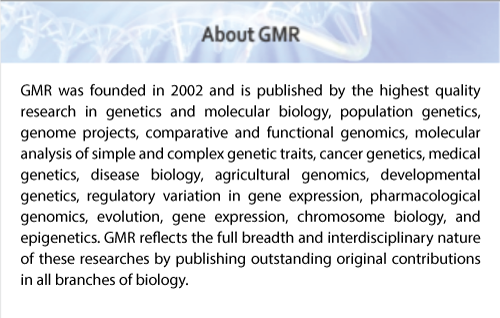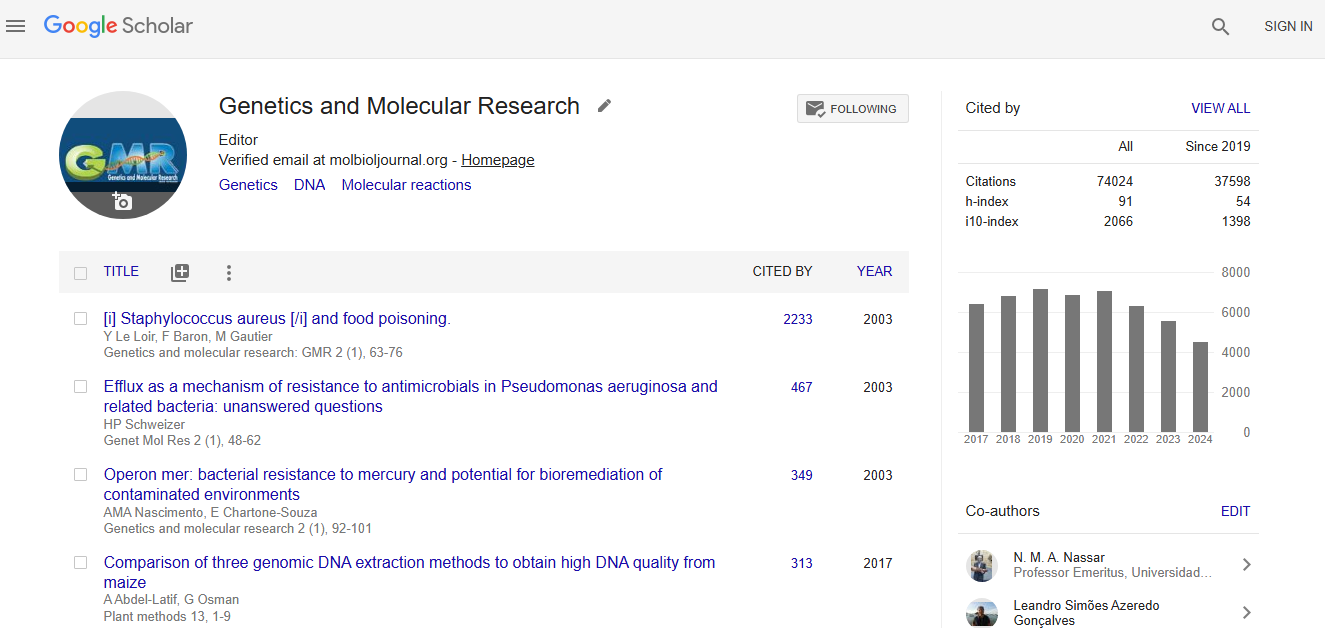Abstract
Identification, Characterization, and Phylogenetic analysis of Pigeon pea (Cajanus cajan L. Mill sp.) Resistance Gene Analogs using PCR cloning and in silico methods
Author(s): Ikechukwu O. Agbagwa, Prakash G. Patil, Alok Das, Khela R. Soren, Indra P. Singh, Sushil K. Chaturvedi, Nagaswamy NadarajanPigeon Pea (Cajanus cajan), an important grain legume, is susceptible to Fusarium wilt (FW), sterility mosaic disease (SMD), and Phytophthora blight. Identification of resistance gene analogs (RGAs) is important for development of resistant varieties. In this study, degenerate primers targeting nucleotide binding sites (NBS) of known resistance (R) genes were used to amplify RGAs from two Pigeon Pea genotypes with differing disease resistance profiles. The translated cloned RGAs had high amino acid identity (68–71%) with putative disease resistance proteins in Glycine Max. Five RGA open reading frames were found in the whole Pigeon Pea genome after BLASTN analysis with the cloned sequences. Translated RGA proteins contained several characteristic features such as the NB-ARC domain (characteristic of death-related disease resistance genes) and four NBS motifs. A tryptophan residue at the kinase-2 motif was indicative of the non-TIR-NBS class of proteins. Phylogenetic analysis revealed two major clusters. The seven Pigeon Pea RGAs were in a non-TIR group alongside wilt resistance proteins from tomato. Specific primers were designed against the RGAs identified by BLASTN, and these successfully amplified sequences from all eight Pigeon Pea genotypes. The 40 resultant sequences were combined according to genotype and subjected to phylogenetic analysis. Genotypes clustered according to breeding pedigree. Multiple alignments of the 40 sequences revealed several single nucleotide polymorphisms (SNPs) that are useful in identifying candidate resistance genes associated with FW and SMD.
Impact Factor an Index

Google scholar citation report
Citations : 74024
Genetics and Molecular Research received 74024 citations as per google scholar report
